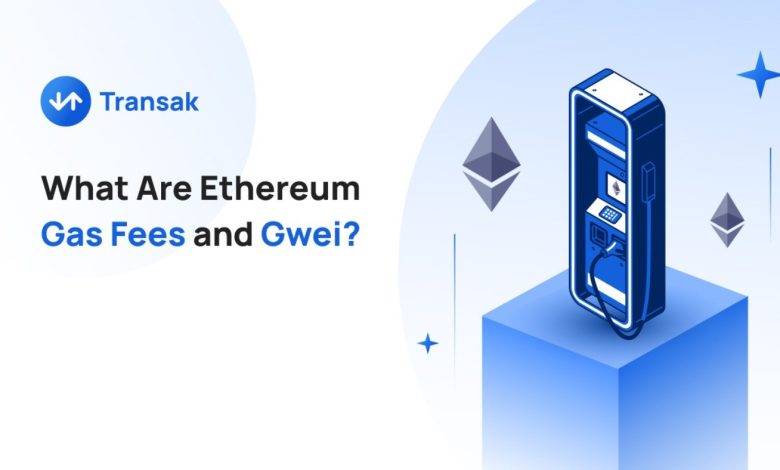The Impact of Gas Fees on DeFi Strategies

- Understanding the role of gas fees in DeFi
- Strategies to minimize gas fees in decentralized finance
- The relationship between gas fees and DeFi profitability
- Gas fees: a barrier to entry for small investors in DeFi
- Optimizing DeFi strategies in a high gas fee environment
- The future of DeFi: addressing the gas fee challenge
Understanding the role of gas fees in DeFi
Gas fees play a crucial role in the decentralized finance (DeFi) ecosystem. **Understanding** how gas fees impact DeFi strategies is essential for **investors** and users alike. Gas fees are the transaction fees paid by users to miners on the blockchain network to process their transactions. These fees can fluctuate based on network congestion and the level of activity on the blockchain.
One key aspect to consider is how gas fees can affect the profitability of DeFi strategies. High gas fees can eat into the profits generated from DeFi activities such as yield farming, liquidity provision, and trading. **Therefore**, it is important for users to factor in gas fees when planning their DeFi strategies to ensure they are maximizing their returns.
Another consideration is the timing of transactions to optimize gas fees. Users can save on gas fees by **executing** transactions during off-peak hours when network congestion is lower. Additionally, users can set the gas price for their transactions to ensure they are processed in a timely manner without overpaying for fees.
Furthermore, developers are constantly working on solutions to mitigate the impact of gas fees on DeFi. **Layer** 2 scaling solutions, such as **sidechains** and rollups, aim to reduce the burden of high gas fees on users while maintaining the security and decentralization of the blockchain network. By leveraging these solutions, users can continue to participate in DeFi activities without being deterred by high gas fees.
In conclusion, gas fees are a critical aspect of DeFi that **users** need to consider when **formulating** their strategies. By understanding how gas fees work and implementing strategies to optimize them, users can navigate the DeFi landscape more effectively and maximize their returns.
Strategies to minimize gas fees in decentralized finance
When it comes to minimizing gas fees in decentralized finance (DeFi), there are several strategies that users can implement to optimize their transactions. By following these tips, individuals can reduce the costs associated with interacting with DeFi protocols and maximize their returns.
- **Batch Transactions:** One effective way to minimize gas fees is by batching transactions together. This involves combining multiple transactions into a single block, which can help reduce the overall cost per transaction.
- **Gas Price Optimization:** Another strategy is to optimize the gas price used for transactions. By setting the right gas price, users can ensure that their transactions are processed quickly and efficiently without overpaying for fees.
- **Off-Peak Hours:** Timing can also play a significant role in minimizing gas fees. Users can try to execute transactions during off-peak hours when network congestion is lower, resulting in lower fees.
- **Layer 2 Solutions:** Leveraging layer 2 solutions such as sidechains or rollups can help reduce gas fees by offloading transactions from the main Ethereum network.
- **Smart Contract Efficiency:** Optimizing smart contracts to reduce the complexity of transactions can also lead to lower gas fees. By simplifying the code and reducing unnecessary computations, users can save on transaction costs.
By implementing these strategies, users can navigate the challenges posed by high gas fees in DeFi and make the most of their interactions with decentralized protocols. It is essential to stay informed about the latest developments in the space and adapt to new solutions that can help minimize costs and improve overall efficiency.
The relationship between gas fees and DeFi profitability
Gas fees play a crucial role in determining the profitability of DeFi strategies. The relationship between gas fees and DeFi profitability is intricate and requires careful consideration by investors and traders. High gas fees can significantly eat into profits, especially for smaller transactions. On the other hand, lower gas fees can make DeFi strategies more lucrative and attractive for users.
When gas fees are high, it is essential for DeFi participants to assess whether the potential profits outweigh the costs. In some cases, it may be more cost-effective to wait for gas fees to decrease before executing a trade or transaction. This requires patience and a keen understanding of market dynamics.
Conversely, when gas fees are low, DeFi strategies can be more profitable, as the costs of executing transactions are minimal. This can incentivize more users to participate in DeFi platforms and increase overall profitability for investors. However, it is essential to monitor gas fees regularly, as they can fluctuate rapidly based on network activity and demand.
Overall, the relationship between gas fees and DeFi profitability is a delicate balance that requires careful monitoring and strategic decision-making. By staying informed and adapting to changing market conditions, investors can optimize their DeFi strategies for maximum profitability.
Gas fees: a barrier to entry for small investors in DeFi
Gas fees have become a significant obstacle for small investors looking to participate in decentralized finance (DeFi) platforms. The high cost of gas fees can make it challenging for small investors to engage in DeFi strategies, as the fees can eat into their profits and make it less cost-effective to execute trades.
For small investors, the impact of gas fees on DeFi strategies can be particularly pronounced. **Limited** capital means that every dollar spent on gas fees is a dollar that could have been invested in a DeFi protocol. As a result, small investors may find themselves priced out of certain DeFi opportunities, limiting their ability to grow their portfolios and participate in the broader DeFi ecosystem.
Furthermore, the unpredictability of gas fees can make it difficult for small investors to plan their DeFi strategies effectively. **Fluctuating** gas prices can lead to unexpected costs, making it challenging to budget for transactions and potentially causing small investors to miss out on profitable opportunities.
In order to address the barrier that gas fees pose to small investors in DeFi, developers and **platforms** are exploring solutions such as layer 2 scaling solutions and gas optimization techniques. By reducing gas fees and making DeFi more accessible to small investors, these initiatives have the potential to democratize access to DeFi and empower a broader range of participants to engage with decentralized finance.
Optimizing DeFi strategies in a high gas fee environment
When operating in a high gas fee environment, it is crucial to **optimize** DeFi strategies to maximize **efficiency** and **minimize** costs. One way to achieve this is by **leveraging** **layer 2 solutions** such as **Optimism** or **zkSync**. These **scaling solutions** can help **reduce** transaction fees and **speed up** transaction times, making DeFi **more accessible** to a wider range of users.
Another **strategy** to consider is **batching** transactions to **combine** multiple **actions** into a single transaction. By **grouping** **together** **multiple** **transactions**, users can **save** on gas fees by **paying** only **once** for **multiple** **actions**. This can be **especially** **beneficial** for **users** who **frequently** **interact** with **DeFi protocols**.
Furthermore, **users** can **optimize** their **DeFi** **strategies** by **monitoring** gas prices and **choosing** **optimal** **times** to **execute** transactions. By **waiting** for **periods** of **lower** gas prices, **users** can **save** significantly on **transaction** costs. **Tools** such as **gas** **trackers** can **help** **users** **stay** **informed** about **current** gas prices and **make** **informed** **decisions** about when to **transact**.
The future of DeFi: addressing the gas fee challenge
As the popularity of DeFi continues to grow, the issue of high gas fees has become a significant challenge for users. The future of DeFi hinges on finding solutions to address this problem and make decentralized finance more accessible to a wider audience.
One potential solution to the gas fee challenge is the development of layer 2 scaling solutions. These solutions aim to reduce the burden on the Ethereum network by processing transactions off-chain, thereby lowering gas fees and increasing transaction speeds. By implementing layer 2 scaling solutions, DeFi platforms can improve the overall user experience and attract more users to the ecosystem.
Another approach to addressing the gas fee challenge is through the use of alternative blockchains. By leveraging blockchains with lower transaction fees and faster confirmation times, DeFi projects can offer users a more cost-effective and efficient experience. This diversification of blockchain options can help mitigate the impact of high gas fees on DeFi strategies.
Overall, the future of DeFi depends on the ability of projects to innovate and adapt to the challenges posed by high gas fees. By exploring new scaling solutions and embracing alternative blockchains, the DeFi ecosystem can continue to thrive and grow in a sustainable manner.




